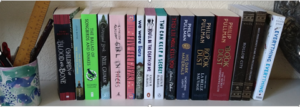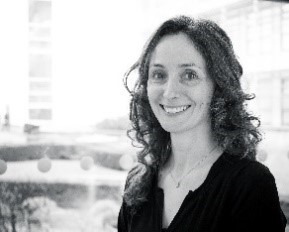By Maria Leedham, Sarah Jane Mukherjee, Sally Hunt and Ernesto Roque-Gutierrez

Finding time to develop a new research project amidst the demands of teaching, supervision and admin can be (how to put it) …. challenging. The first three of us named here –Maria, Sarah and Sally – are in the throes of module production for a new, interdisciplinary module titled Language, literature and childhood (L301) and found we had little time and headspace for developing new research. However, a chance conversation in the OU coffee shop led us to consider the possibilities of our combined teaching and research interests and take a linguistic approach to the study of children’s literature.
OU funding enabled us to bring in Ernesto as a research assistant and also buy books …. So what is the project and what do we hope to achieve in the world of children’s literature?
To answer this, we’d like to bring in a foundational quote on literature from Professor Rudine Sims Bishop:
‘A book can sometimes be a window. […] Usually the window is also a door, and a reader has only to walk through in imagination to become a part of whatever world has been created or recreated in the book. […] a window can also be a mirror, […] Reading then, becomes a means of self-affirmation of reaffirming our place in the world and our society.’ Bishop (1990).
Bishop’s message is that the windows, mirrors and doors onto the world presented through literature reveal powerful messages about who is valued in society and also who is marginalised. For teenage readers, the messages woven through popular young adult (YA) literature are particularly influential as they develop their identities and world views. Our overarching research question is thus:
What worldview is gained from reading popular young adult fiction?
Our project aims to make visible the patterns of meaning in the top 50 best-selling YA books in the UK over a 5-year period (April 2017- May 2022). We’re using a mixed methods approach of corpus linguistics to analyse the texts, and focus groups to gain the views of young readers. It’s early days yet, but we hope findings will be useful to secondary schools and in particular to librarians in understanding the importance of book choices to reveal the windows, mirrors and doors available to young adults through their reading repertoires.
While time is still in short supply, we’re finding that the reading and discussions we’re having around the research project are feeding in to module production and vice versa. We’re now writing a short work-in-progress report on the project which will feature in the module materials – and thus hope to enthuse a new generation of scholars.
Reference
Bishop, R. S. (1990). Windows and Mirrors: Children’s books and parallel cultures. In Margaret Atwell and Adria Klein (eds.) California State University, San Bernardino Reading Conference 14th Annual Conference Proceedings. “Celebrating Literacy”. pp. 3 – 20

Maria Leedham is a Senior Lecturer in Applied Linguistics and English Language in the School of Languages and Applied Linguistics at the Open University.
@Marialeedham

Sally Hunt is a Staff Tutor and Lecturer in Applied Linguistics and English Language in the School of Languages and Applied Linguistics at the Open University.
@sallyhuntsa

Sarah Jane Mukherjee is a Lecturer in Applied Linguistics and English Language in the School of Languages and Applied Linguistics at the Open University.
@sjmukherjee0702

Dr Ernesto Roque-Gutierrez is an Affiliated Researcher at the Open University. He is interested in several aspects of language learning, cognition and education.
@reworkingmemory